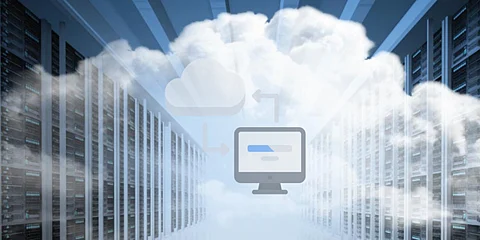

In cloud computing’s intricate and high-stakes world, monitoring isn’t just about keeping systems running—it’s about ensuring that businesses remain resilient and competitive in an unpredictable digital landscape. Every second of downtime or underperformance can translate to lost revenue, customer dissatisfaction, or reputational harm. As cloud technologies evolve, monitoring tools must rise to meet new challenges, blending real-time insights, predictive analytics, and cutting-edge visualization.
Cloud monitoring has come under the spotlight in recent years, often due to high-profile failures. Take, for example, the Amazon Web Services (AWS) outage in December 2021, which disrupted major platforms like Netflix, Disney+, and even critical logistics systems for delivery companies. For hours, engineers scrambled to identify the root cause and restore services. This incident pointed to an obvious fact: if not effectively monitored, the magnitude and sophistication of cloud infrastructure can be overwhelming even to the best-prepared IT teams.
"Outages like this highlight the importance of proactive cloud monitoring," explains Neha Surendranath, a technical program manager specializing in cloud infrastructure. "It’s not enough to react once problems arise; teams need tools that help them predict, visualize, and address issues before they spiral out of control."
Modern Cloud Monitoring tools have placed a wide emphasis on the performance of dashboards which centralize or consolidate and visualize key metrics. Not all dashboards are created equally. Poorly designed dashboards hide crucial information at the wrong moment, and it delays diagnosis or provisioning.
Neha emphasizes the value of well-structured dashboards: "An effective dashboard tells a story. It’s not about dumping every metric onto a screen—it’s about guiding engineers to what matters most, whether it’s unusual latency spikes, resource constraints, or security anomalies."
Her work involves managing dashboards for distributed cloud environments serving millions of users. In one case, she led the redesign of a performance dashboard that reduced incident response times by 30% through improved data prioritization and real-time alerts.
One of the most cited examples of why cloud monitoring matters is the GitLab outage of 2017, when a simple error during database maintenance deleted critical production data. While the incident stemmed from human error, inadequate monitoring compounded the problem by failing to alert the team early enough about potential risks.
"Real-time monitoring isn’t just about keeping an eye on system health," Neha says. "It’s about building in safeguards that alert teams to unusual activity, giving them time to prevent disasters."
This case prompted many companies to rethink their monitoring strategies, emphasizing the need for predictive analytics and anomaly detection to catch problems before they escalate.
The future of cloud monitoring is automation and intelligence. With predictive analytics that leverages machine learning, systems can foresee performance bottlenecks or resource shortages by using historical patterns. Insights through AI might take this a step further, where it would provide proactive measures or initiate automated responses.
Neha points to an example from her experience: "In one project, we integrated predictive analytics into a cloud dashboard for a retail platform. The system flagged potential capacity issues ahead of a flash sale, allowing the team to scale resources in advance. The result? Zero downtime, even with a 200% spike in traffic."
Major cloud providers like Google Cloud and Azure Monitor are already embedding AI-driven tools into their platforms, enabling teams to act faster and more decisively.
Looking ahead, augmented reality (AR) may transform how IT teams interact with monitoring data. Imagine an AR interface that allows engineers to "walk through" a digital replica of their cloud infrastructure, exploring performance metrics in a 3D space. It is still largely conceptual, but this approach could offer an intuitive way to understand complex systems.
"We’re only starting to explore the possibilities of immersive monitoring," Neha notes. "But as systems grow more complex, we need interfaces that simplify—not complicate—our understanding of what’s happening behind the scenes."
While the benefits of advanced cloud monitoring are clear, implementation comes with its own set of challenges:
Data Overload: Cloud systems produce so much data it is often hard to extract actionable insights.
Legacy Systems: A huge number of organizations have legacies still in their IT infrastructure. This increases integration barriers with new monitoring tools
Cost vs. Benefits: Advanced tools are normally quite pricey initially, making them unreachable to more modestly sized firms.
Neha acknowledges these hurdles but emphasizes the long-term value: "Investing in better monitoring tools might seem costly upfront, but the ROI is clear when you consider the downtime and inefficiencies they help avoid."
Cloud monitoring is no longer an option. The more an organization relies on cloud infrastructure to provide critical services, the greater the stakes of effective monitoring. Whether it be predictive analytics, AI-driven insights, or future innovation such as augmented reality, the tools IT teams will use to manage their systems have to be in line with the evolving technology they support.
"The future of cloud monitoring is about staying ahead of the curve," Neha concludes. "We need tools that not only tell us what’s wrong but help us see what’s coming. It’s about being proactive, not reactive."
For businesses aiming to thrive in the cloud era, investing in robust, well-designed monitoring tools isn’t just smart—it’s essential.
